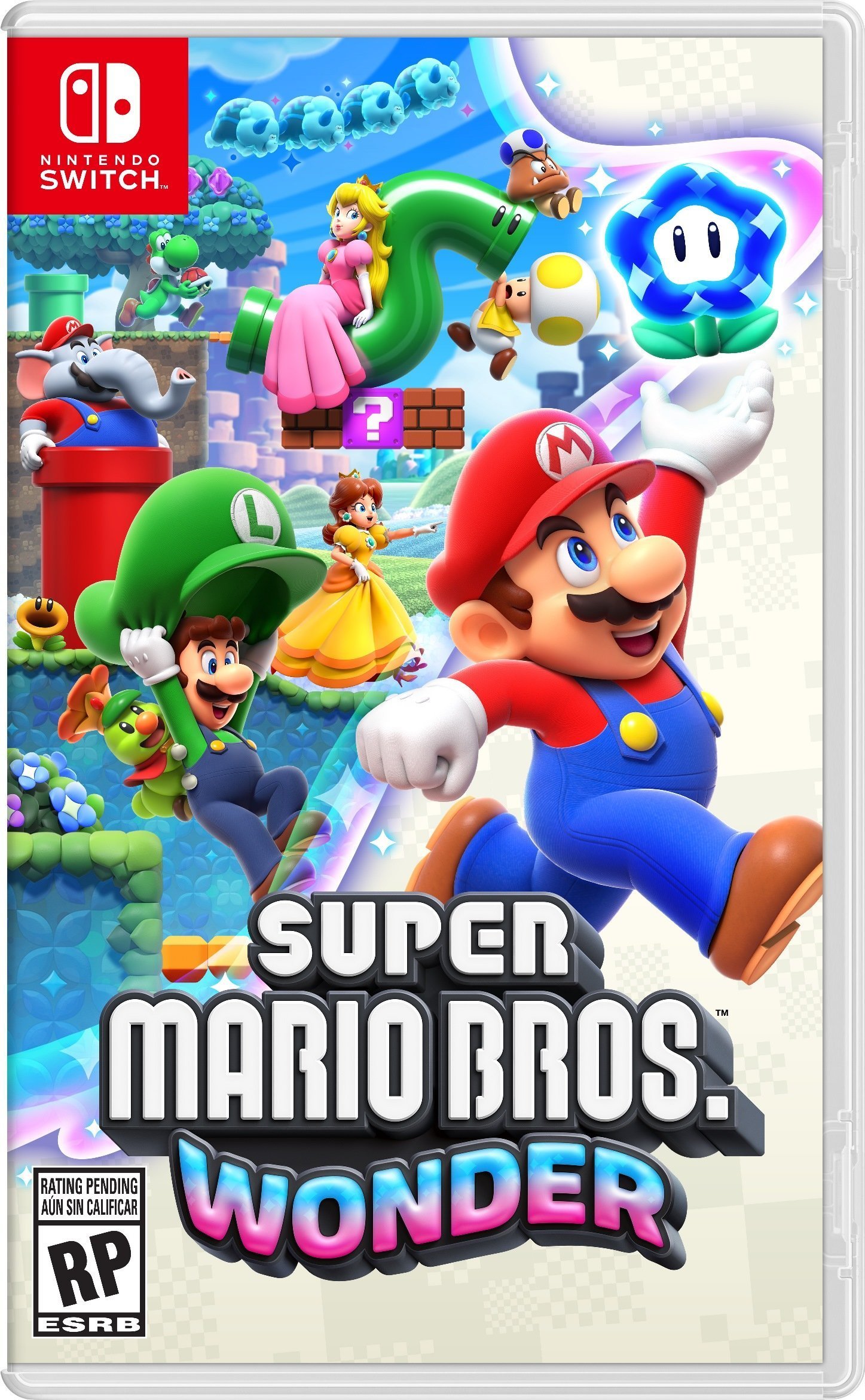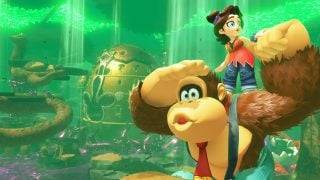“Well, it looks like you know what you’re doing.”
The comment from the Nintendo Live exhibitor next to me as I played Super Mario Bros. Wonder gave me a chuckle. I had to hold back a ramble about all the 2D Mario games I’d played before, from the golden oldies of the NES to the more modern offerings on Nintendo Switch. Growing up with the releases of the New Super Mario Bros. series, I’d become used to a certain style of 2D Mario formula – one that certainly informs the plumber’s new adventure, but no longer defines it.
Super Mario Bros. Wonder iterates on the classic platforming in a way that feels genuinely fresh for the first time in some years. While certain titles like Super Mario Maker have provided creative vectors on which whole spinoffs formed, Wonder is the first in a long time to offer what feels like a genuine step forward for the series rather than a remixing of established elements with the occasional new ingredient tossed in.
After picking my character (Yellow Toad), I leapt through three different stages in the course of a 15 minute demo. The first was a classic 1-1 style grassland to learn the ropes and try out the new Elephant power-up. The most striking thing about Wonder, one that you can glean from trailers alone, is its presentation: as opposed to the polished but ever-so-slightly stale sheen of the New SMB games, everything pops with carefully shaded vivacity. While Mario has never had bad visuals, you can tell the team is putting care into concepts beyond high fidelity and considering what stylism they can achieve while still remaining clean, and the result is visually splendid.
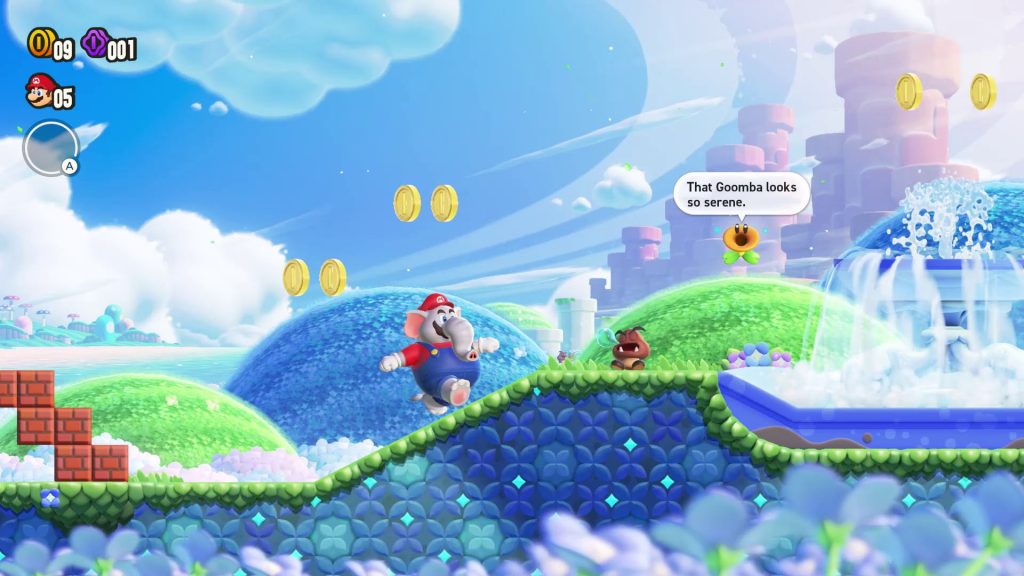
The aforementioned Elephant power-up was fun to play with, and not as overpowered as I feared it might be. Like a Tanuki suit or other animal outfits Mario’s donned throughout the years, you have to swipe with the Run button in order to defeat enemies in your path: you can’t simply run into them and stampede them to death. While the increased size is certainly a boon in clearing obstacles, it also makes you a bigger target, especially if you don’t know how to maneuver properly. The water spraying mechanics also seemed novel – there were a surprising number of goodies (mostly coins) to obtain just by watering parts of the ground.
The most standout part of the first stage, however, was the Wonder Flower. It’s no… uh, wonder that this is the mechanic at the center of the game and the marketing, because it really does feel like its significant development. Transforming the landscape, pipes of all sorts grew eyes and became mobile, a high energy encouraging me to dash onward towards the Wonder Seed ahead. The cross-dimensional challenge most reminded me of Kirby games and their mid-level key collectibles (crystal shards and whatnot), though the challenge is less in savvy and more in pure platforming skill. The first level’s Wonder Seed was pretty easy to obtain, and I felt good hitting the top of the flagpole.
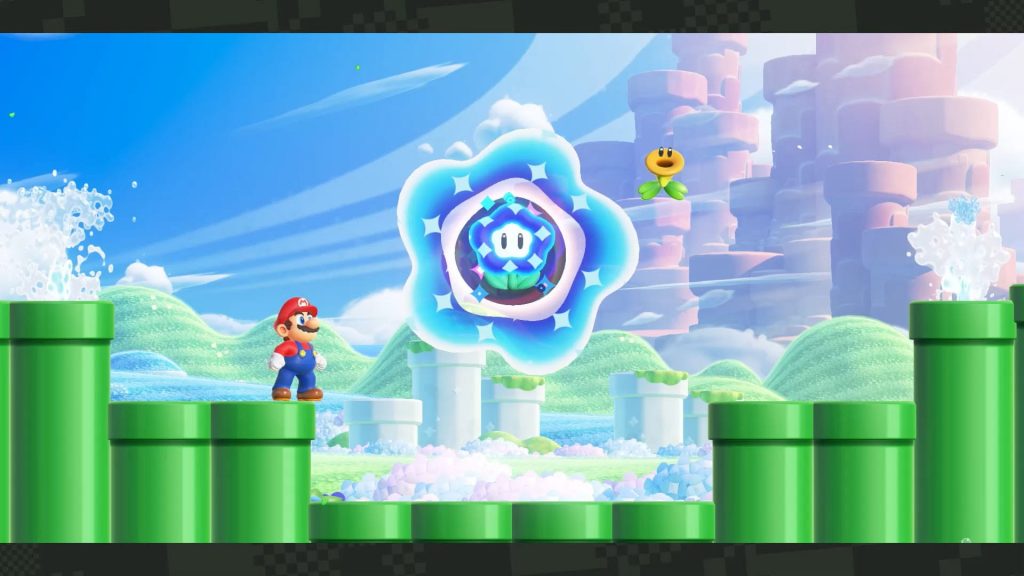
The exhibitor showed me to a more challenging set of stages. Instead of diving straight into another full level, I stopped by the badge challenge stage, which was focused on wall jumping. There were several badges available in the demo, and they felt like the other game changer – offering effects that ranged from convenient to legitimately life-saving, the choice of which could drastically change a level run. The challenge stage offered the perfect amount of difficulty to get used to the badge and its particulars without feeling roadblocked, so that by the time I busted it out in the next proper level, I already felt like an old hand at it.
Said level involved rampaging beasts somewhere between rhinos and triceratops. Learning their properties (you could stand upon them safely, though they charged and jumped off slopes) was a tricky process, and I definitely bit it a couple times. More pressingly, after grabbing the Wonder Flower I backtracked to grab a quick thing I missed… only for the Wonder Effect (a stampede of the creatures) to dissipate into thin air. It was a confirmation that obtaining Wonder Seeds wouldn’t be a cut and dry matter, but a challenge to commit to. I didn’t have time to reattempt the stage, but I could tell that obtaining all of the Wonder Seeds in the full game will be no simple feat.
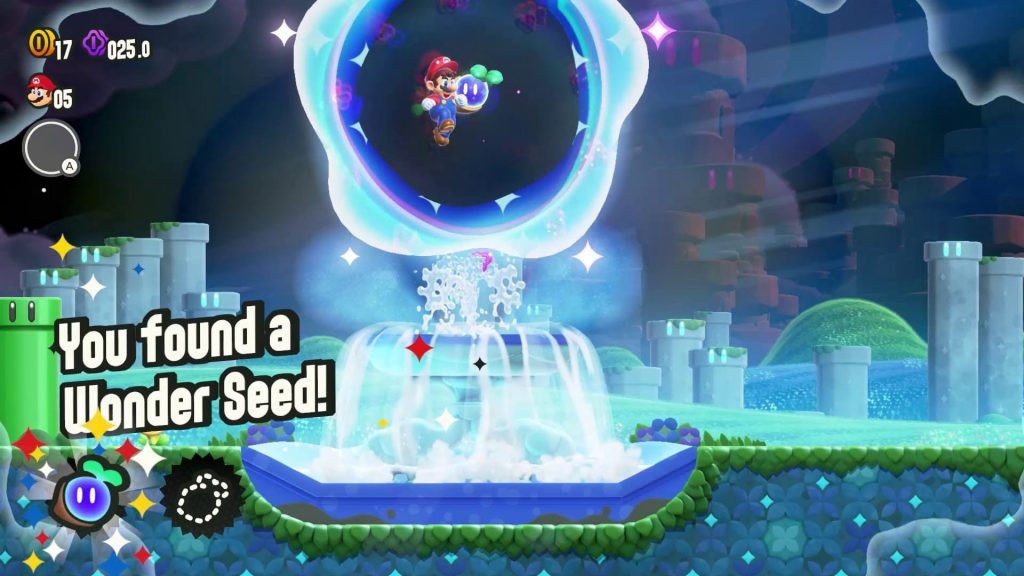
The final stage was an underground level involving the new Konk enemies and crystalline walls which you could manipulate them into smashing. It introduced the Drill power-up, which I honestly had trouble wrapping around – most games I know that involve digging utilizes 360 degree motion while buried, so the fact that movement was still horizontal while underground tripped me up. I’m sure it’s something I’d get more used to in the full product, but it was a steeper learning curve for my brain than I expected. There were some really creative uses for it in the level too, whether it was finding secret passages or unearthing treasure from the ceiling. I didn’t get the midlevel Wonder Seed here, either, but that just made me itch to dive into the full product.
And that’s the main takeaway from Super Mario Bros. Wonder for me – it’s the most excited I’ve been to play a new 2D Mario game in a long time. It’s clear that Nintendo not only put their usual heart and soul into this one, but some genuinely new ideas and wrinkles that will hopefully pay off by propelling 2D Mario into the future. There’s a lot to be excited about with this one, and I can’t wait to see what sort of level design Nintendo has in store.
To put it succinctly, Super Mario Bros. Wonder made me feel like I didn’t quite know what I was doing. And that was such a wonderful feeling to have.
Leave a Comment
